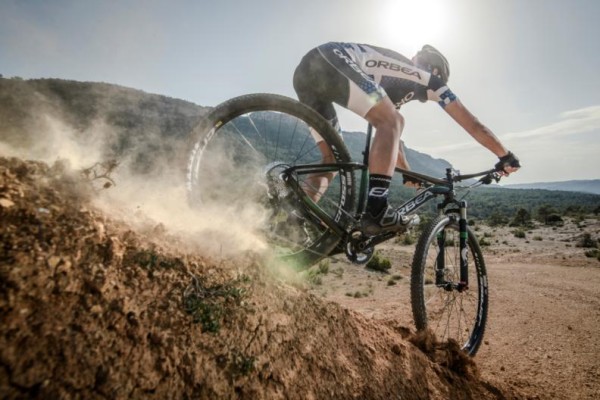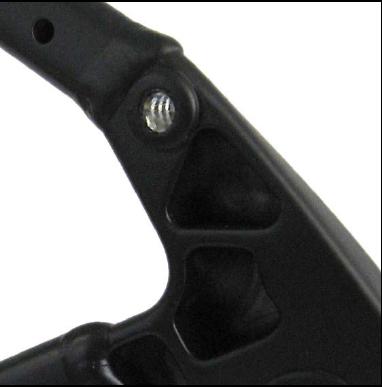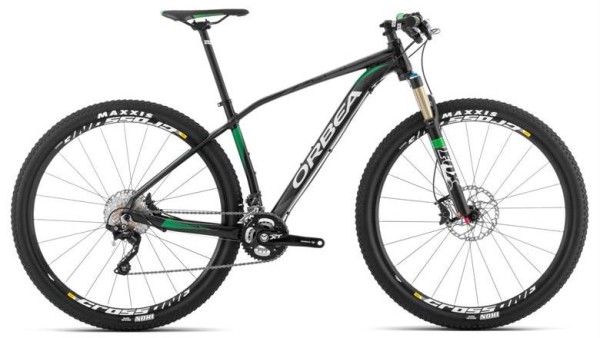
When the carbon-framed Orbea Alma hit the Texas cross country circuit in 2006, it quickly became THE bike to have. A full year before Julien Absalon devastated the World Cup circuit, racers in the Lone Star state were quick to recognize the advantage of the lightweight, big wheeled bike on courses defined by high speed cornering on loose-over-hardpack singletrack, tons of square edged hits, and countless steep, punchy climbs.
The Alma went fast, looked sweet, and, as carbon went anyway, it was way cheaper than the handful of options coming from boutique builders. Nearly a decade later, carbon wagon wheelers have become lighter and more esoteric, as the racer niche proves willing to shell out top dollar for speed. Meanwhile, once coveted alloy frames have been largely relegated to entry level bikes. As a result, journeyman racers on a budget are often forced to choose between carbon bikes with very un-race worthy components, or the proverbial lipstick on pig: a drivetrain and brakes that can handle a season of hard racing, dangling off a heavy frame with recreational geometry.
With the launch of the new 2015 Alma Hydro, Orbea is now offering a more affordable aluminum frameset that integrates all of the features of the carbon Alma, giving budget minded XC racers – as well as ultracross and adventure riders – a competitive option.
The 2015 Orbea Alma Hydro line is receiving a complete makeover from the previous, 2013 model. The aluminum frame will now include all the design updates introduced last year in the carbon hardtail, including their “4×4” design, Big Wheels Concept, and Direct Cable Routing.
The Alma Hydro frame features a fourth bend in the front and rear triangle just like the carbon version in what Orbea’s terms as its “4×4” design. Orbea claims this makes the bike 15% stiffer and a whopping 68% more complaint than the 2013 model. Orbea’s published weight on the hydroformed frame is 1650 grams – 500 more than their performance carbon and 660 more than the race carbon – which is a smidgen more than the previous alloy model. However, the changeover to direct post mounts for the rear brake and internal cable routing will shave some weight on components. Unlike the carbon frames, the Hydro is not Di2 ready; the complete Alma M-LTD is coming spec’d with XTR Di2.

Weight for the Hydro is going to vary considerably between sizes, as the Hydro also adopts 27.5 wheels in three sizes small through large, with big hoops on the three medium through XL frames. The overlapping medium and large sizes actually differ in geometry, with the 29er version sporting seven to eight millimeters of additional top tube, five millimeters more headtube, and a chainstay that is 13 millimeters longer than the 27.5. The bottom bracket – which is traditional rather than a pressfit – is 3mm lower on the 29er as well. While they both carry medium and large tags, riders may find substantive differences in fit between the two wheel configurations.
Being a race oriented bike, it’s running a more compliant 27.2 seatpost. You’ll get a little more comfort, but limited dropper post options. Complete bikes are only available with Shimano drivetrains, none of which are single ring 1x groups.
The Hydro will be available in four trims: H10, H30, H50, and H70. The top of the line H10 comes with and XT crank and rear derailleur, SLX components for the rest of the drivetrain and brakes, and a Fox 32 Float fork. The most affordable H70 model will have the very solid Deore drivetrain with a triple crank, Shimano’s unlabeled M396 brakes, and the Rockshox XC 30 TK fork. The H10 and H30 are unique across the Alma line as they are available in four color schemes and are eligible for the MyO customization program where you can pick component specifications, stem length, handlebar width, and crank length – plus you get your own bar code on the downtube. Expect price announcements during the trade shows.
